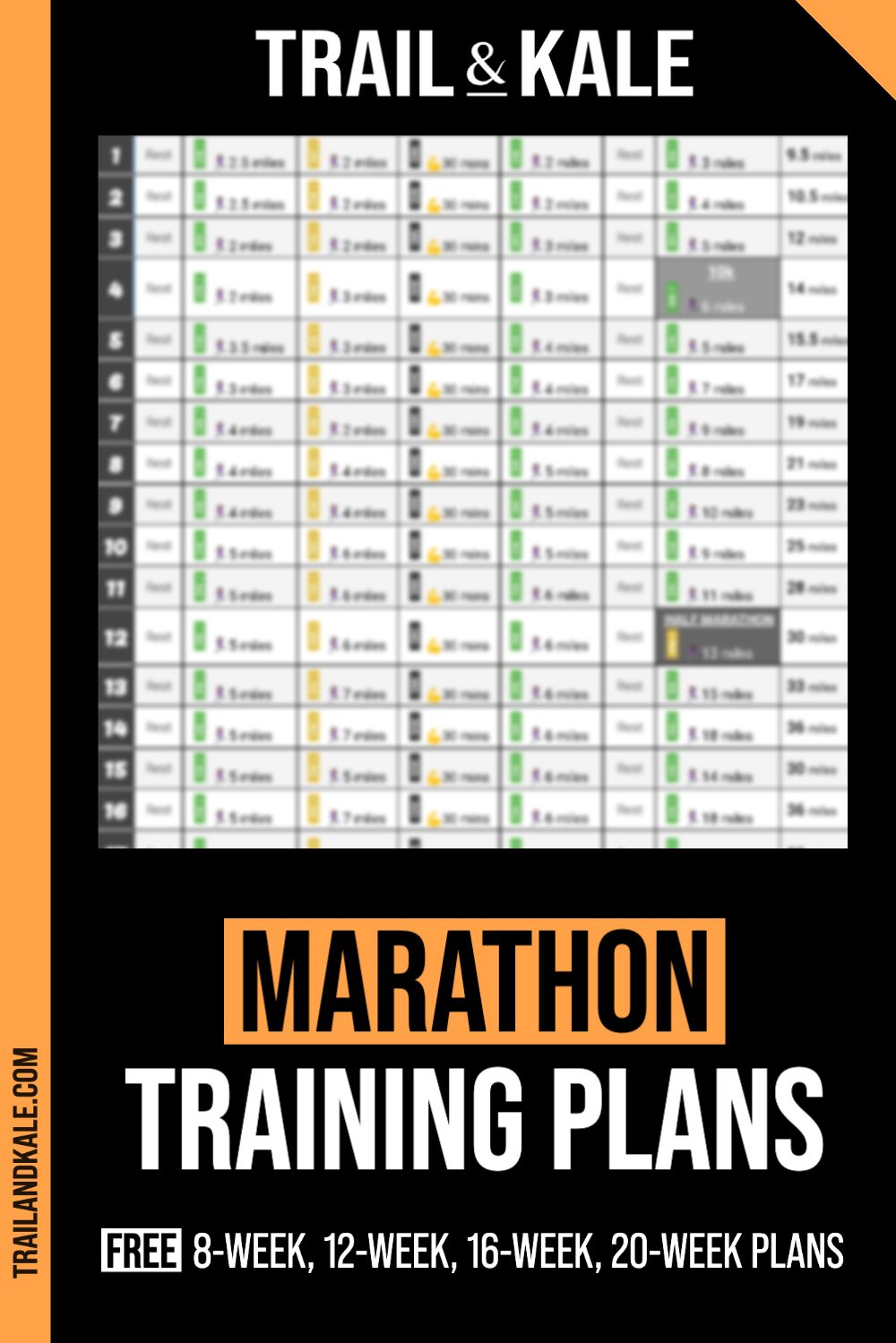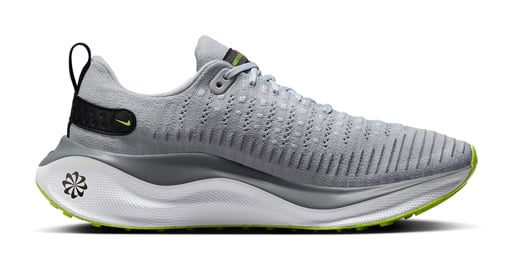In this post I’m sharing everything you need to know about running a marathon, and our free marathon training plans for runners of every level, including if you’re completely new to running and have your sights set on building up to running the marathon distance.
Most marathon training programs you’ll come across are going to be fairly similar because they follow the same tried-and-proven principles of marathon training, including gradually increasing mileage and long runs, incorporating speed work and tempo runs, allowing for adequate rest and recovery, and tapering in the weeks leading up to the race.
What makes our marathon training plans so popular is that we believe in a more holistic approach that helps to reprogram your daily routine, habits, and mindset, rather than simply prescribing training runs or rest days written on a planner – we like to go the extra mile, so to speak.
We have more training plans:
- The Ultimate Couch To 5k Plan For Beginner Runners
- Start Running After 40
- 10k Training Plans
- Half Marathon Training Plans
- 50K Training Plan + ULTRA RACE GUIDE
As part of our marathon training guidance and advice you’ll find throughout our website, we also provide advice covering topics such as mental preparation, effective recovery methods, and the importance of proper nutrition… because you’ll quickly learn that running a marathon is as much about what you do when you’re not running, as when you are!
This post is in partnership with Nike. If you’re looking for a supportive running shoe with enough cushioning and response to help you reach your goals of running longer or running faster; the Nike InfinityRN 4 is the perfect training partner for you. Read my in-depth Nike InfinityRN 4 review to learn more.
Ok, let’s get into it…
If you’ve landed here for our specific Couch to Marathon, Beginners (16 week) or Intermediate (12 week) marathon training plans, jump further down to download them for free!
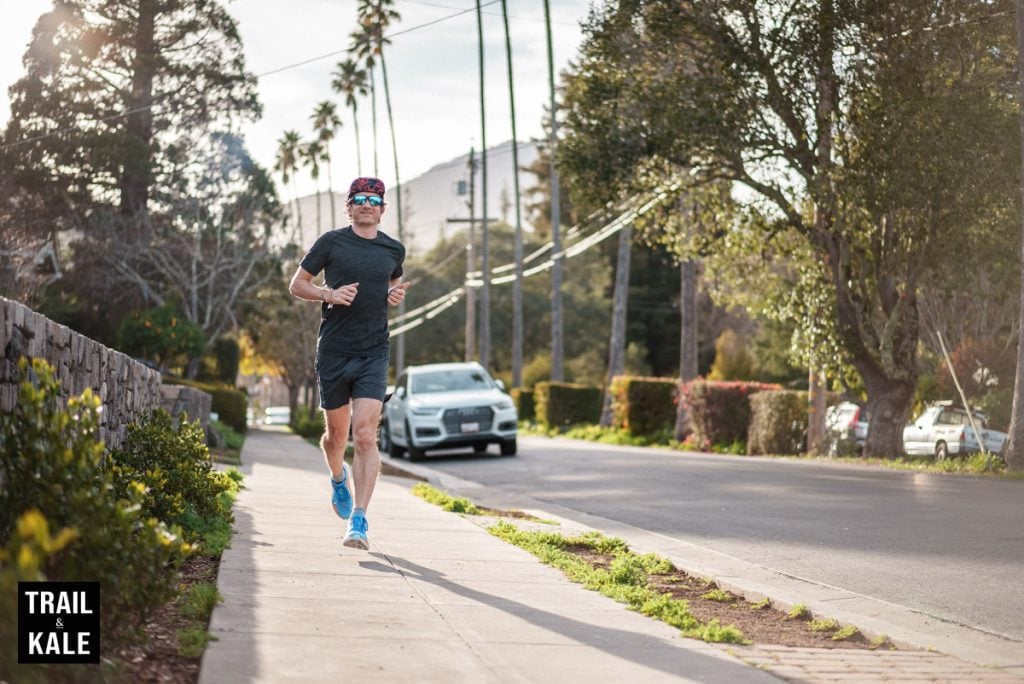
In this post, you’ll learn
- How far is a marathon in miles?
- How long does it take to run a marathon?
- What is a good marathon running pace?
- Can anyone become a marathon runner?
- How long does it take to train for a marathon?
- How many hours a day should you train for a marathon?
- Should you run every day when training for a marathon?
- How many miles should you run each week when training for a marathon?
- Our FREE marathon training plans
- Types of running referenced in our marathon training plans
- What to do if you miss a few weeks of training
- Other FAQs about running a marathon
Let’s start by covering some of the popular questions surrounding the Marathon distance, pacing, and training techniques.
How far is a marathon in miles?
A marathon is 26.2 miles long, which translates to 42.195 (round up to 42.2) kilometers.
How long does it take to run a marathon?
The current world record holder for the marathon distance is Kenyan marathoner Eliud Kipchoge, whose time was set at just over two hours (02:01:09) in the 2022 Berlin Marathon.
He has also recorded faster times of just under 2 hours in events that have not qualified to be official world records as they weren’t official races and he had pacers along the way.
Other professional runners tend to finish marathon races in 2h30 or less. But for the majority of runners, your marathon finish time is going to be between 4 and 5 hours. If you want to run-walk the distance, then it may take you a little longer, up to 6-7 hours or so.
Many faster runners who are committed to their training are able to achieve marathon finish times of between 3 and 4 hours. So, if you’re finishing a marathon in less than 4 hours you’re doing well and should be proud of yourself!
Boston Marathon qualifying times
You’ve probably heard of the Boston Marathon. After all, it’s one of the most famous city marathon races in the world!
In order to be eligible to apply for a place to run the Boston Marathon, you need to record a qualifying time of under a certain duration, which varies depending on your age and gender.
In this way, Boston sets a benchmark marathon time goal that many serious runners aim for so they can be in with a chance to run this iconic race.
For example, to qualify for the 2023 Boston Marathon a male runner aged 40-44 needs to record under a 3h10 marathon. Women get an extra 30 minutes – you’d need to record a sub 3h40 marathon.
Here’s the full list by age and gender (based on the 2023 qualification criteria):
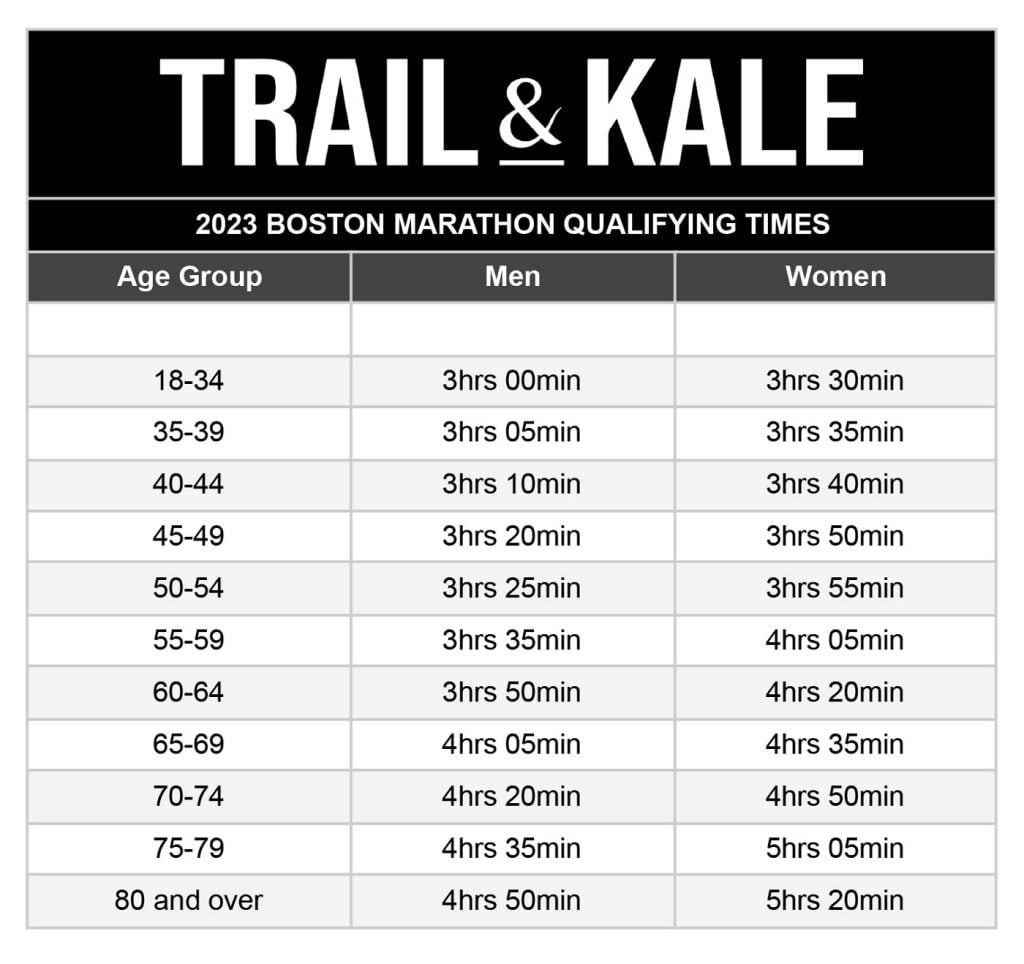
What is a good marathon pace?
‘Good’ is all relative. For most people, the best person and time to beat is yourself and your personal best time, rather than comparing your marathon pace to other runners.
I mean, come on, you’re basically badass for running a marathon, it doesn’t really matter how long it takes, it’s still a fantastic achievement!
Here are some average marathon paces to give you an idea of what kind of average pace you’d need to run throughout your race (and ideally beat, in order to provide a few seconds of time buffer) in order to achieve milestone finish times:
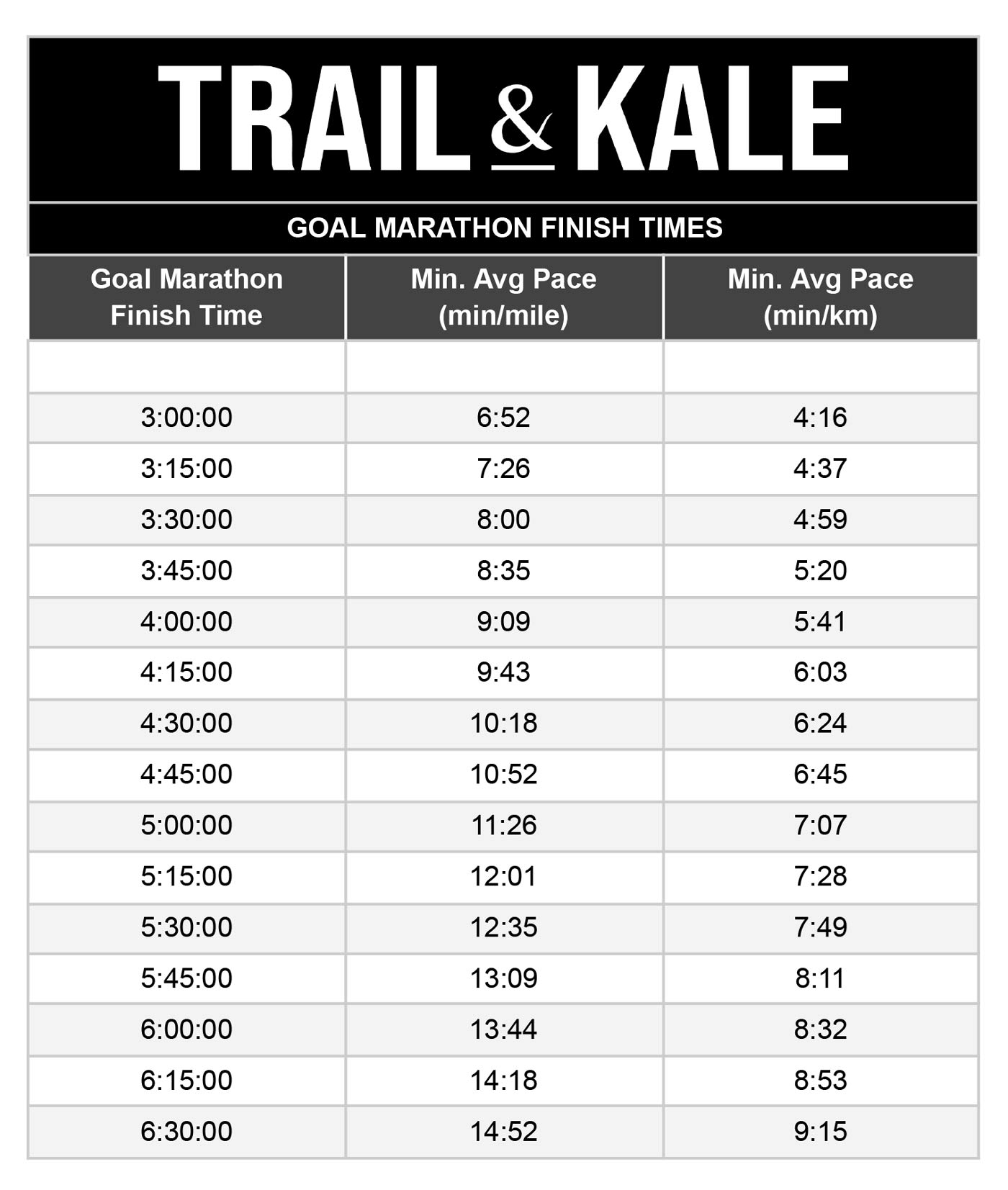
If you’re curious about what kind of marathon finish time your current or expected marathon pace would get you, this chart will help you work it out:
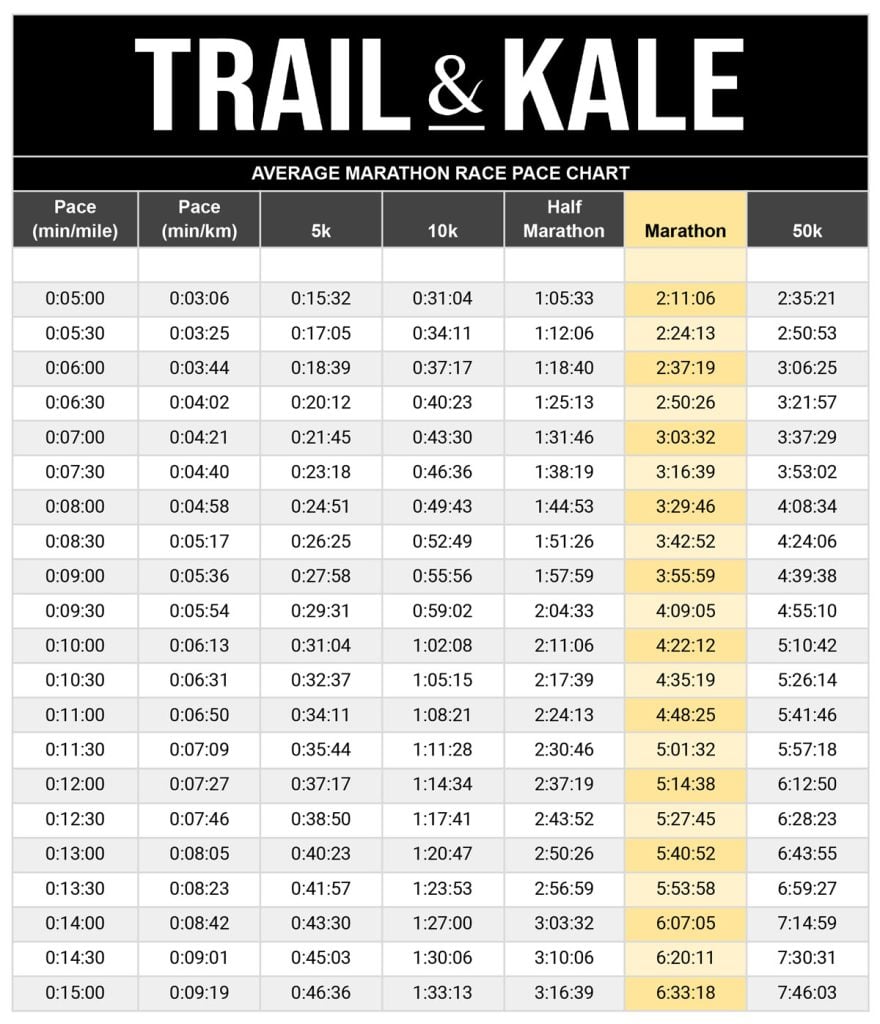
To allow a little buffer, make sure you’re aiming to run with a faster pace than shown above, to ensure you don’t miss your target time goal by a few seconds (or hundreds of a second)!
Can anyone become a marathon runner?
We all have our origin stories of when we first began running seriously, and started referring to ourselves as a runner. For me, I used to run in college from about age 7-18 but would mostly do sprinting events every now and then when sports day would come along.
During university I swapped the track for pints of beer, and running became a bit of a lost art for me. I later picked it up again whilst working in London as a VFX supervisor for a large film and advertising company, as a way to keep fit and offset all the time spent working at a computer, constantly chasing the next ‘air date’ deadline.
I ended up running countless half marathons and marathons, but for me, it wasn’t until I ran my first trail marathon in Gran Canaria that I got absolutely hooked on running and truly identified as A RUNNER.
The addiction to running really came when I realized how much confidence I got from crossing marathon and ultramarathon finish lines. I mean, how badass is it to be able to achieve that, right!? And better yet, WE GET TO DO THESE THINGS.
I’m so excited for you to be starting this journey because I know when you cross that marathon finish line after training with our marathon training plan, you’re going to feel that same confidence that you will have earned.
Helen has her own story, before she started running in her 20s she believed she ‘wasn’t a runner’. She didn’t think it was something she was physically able to do, but saw people around her doing it and longed to be able to achieve something so challenging.
One year she happened to meet someone who had taken up running in his 50s and had recently run his first marathon. He looked her in the eye and told her that if your mind is strong, and you believe in yourself, then you, and anyone else who puts their mind to it, can run a marathon, too.
Track forward a year or so later and not only had Helen started running, but she had completed her first marathon. Not just any marathon, either. An epic, rocky trail marathon across the mountains of Gran Canaria, Spain (yes the same marathon that sparked something in me too). Couples who run together, stay together! 😉
This is my way of looking you in the eye (sort of) and telling you the same thing – that is, essentially, to have confidence in yourself.
Yes, you are capable. Yes, you can do ‘hard things’. And yes, trust our training plan, trust yourself and your body, and put your mind to it and you, too can not only run a marathon, but you may actually find that you not only enjoyed it, but it may just change your life 🙂
How long does it take to train for a marathon?
How long it takes to train for a marathon depends on your marathon goals, as well as your current level of running or other athletic experience and overall fitness, and ultimately the training plan you choose to follow.
It also depends how much time and dedication you plan to put in to doing the proper training necessary to train for a marathon while minimizing your risk of running injuries.
Such injuries can be caused by running too much, too soon, before your body has adapted and become strong enough to handle the marathon training load.
Our most popular marathon training plan is 16 weeks long.
A marathon training schedule of 16 weeks, or around 4 months, provides most runners with enough time to gradually build up their weekly mileage, including building in time for a long weekend run, and mid-week training sessions that help you work on speed, strength and endurance.
There’s also time to build in rest days, strength training and yoga or stretching sessions, as well as a tapering period in the two weeks leading to race day.
We also have a 20 week marathon training plan specifically for new runners, which we call our ‘Couch to Marathon training plan’.
Our Couch To Marathon training plan is ideal for you if you have your sights set on running a marathon, don’t have a particular time goal in mind but want to do some effective training by following a marathon training schedule to help you build up to finishing that milestone marathon distance.
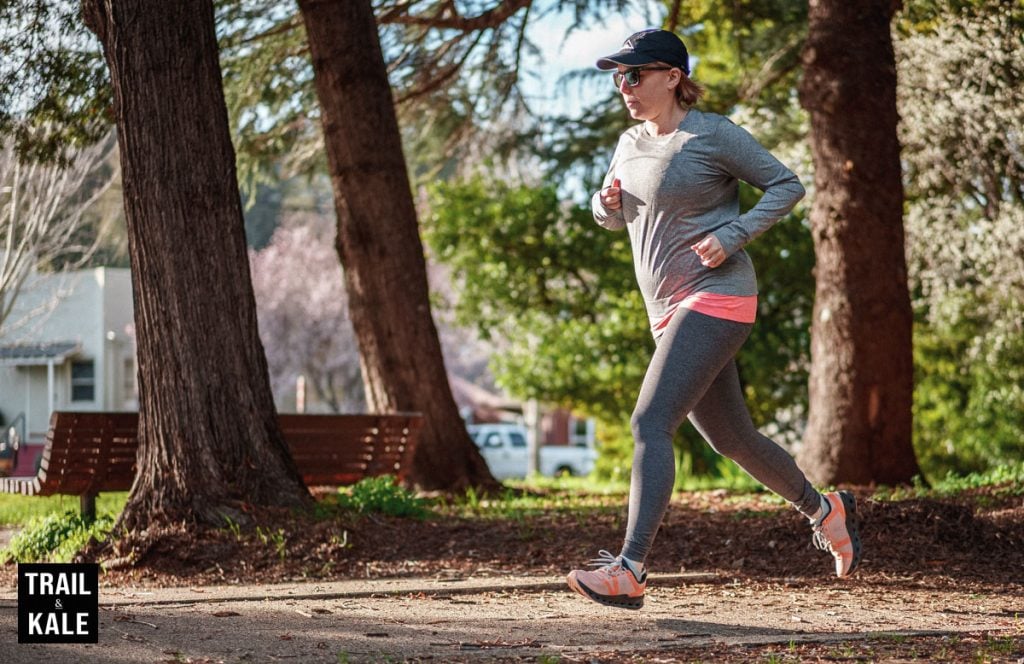
How many hours a day should you train for a marathon?
Most training sessions in our marathon training plans are one hour or less.
Your weekend ‘long run’ will start off at around one hour, but eventually will build up over the weeks to several hours as you start to run longer distances to build weekly mileage and prepare your body and mind for completing the 26.2 mile marathon race.
As mentioned at the start of this post, however, what’s also important is what you do when you’re not running, to help mentally and physically prepare yourself for the tougher training runs and race day itself.
This includes getting enough sleep to help your body restore and recover, eating the right foods to help with repairing muscle tissues, providing energy and reducing inflammation, stretching to work on flexibility and range of motion, and more.
So in reality, you’re mentally training for a marathon the whole time leading up to the starting line!
Should you run every day when training for a marathon?
It’s important to have rest days in your marathon training schedule / program to allow your body time to recover between training runs and strength sessions, so you won’t be running every single day if you follow our marathon training programs.
How many miles should you run each week when training for a marathon?
Our marathon training approach follows the ‘10% rule’.
The meaning of the 10% rule is essentially that runners should not increase their weekly mileage or long run distance by more than 10% from the previous week.
This allows your body to gradually adapt to the increased demands of training, minimizing the risk of injury or burnout. For example, if you run 20 miles in one week, you should not run more than 22 miles the next week.
This is really important because if you don’t stick to it and you think you’re over-performing against your training program by running extra mileage, this could actually mean that you’re on the path to a running overuse injury such as shin splints or Achilles tendinitis – and nobody wants an injury to set their marathon training back weeks or more.
Our marathon training plans
Follow the links below to head over to each of our marathon training plans:
- 20-WEEK MARATHON TRAINING PLAN – Couch To Marathon – (20 weeks / 5 months)
- 16-WEEK MARATHON TRAINING PLAN FOR BEGINNERS – Our Plan For Beginners – (16 weeks / 4 months)
- 12-WEEK MARATHON TRAINING PLAN – Intermediate to Advanced – (12 weeks / 3 months)
- 8-WEEK MARATHON TRAINING PLAN – For Your Fastest Marathon Yet – (8 weeks / 2 months)
Types of running referenced in our marathon training schedules
These are the main types of runs and other workout activities you’ll see used in our marathon training schedules.
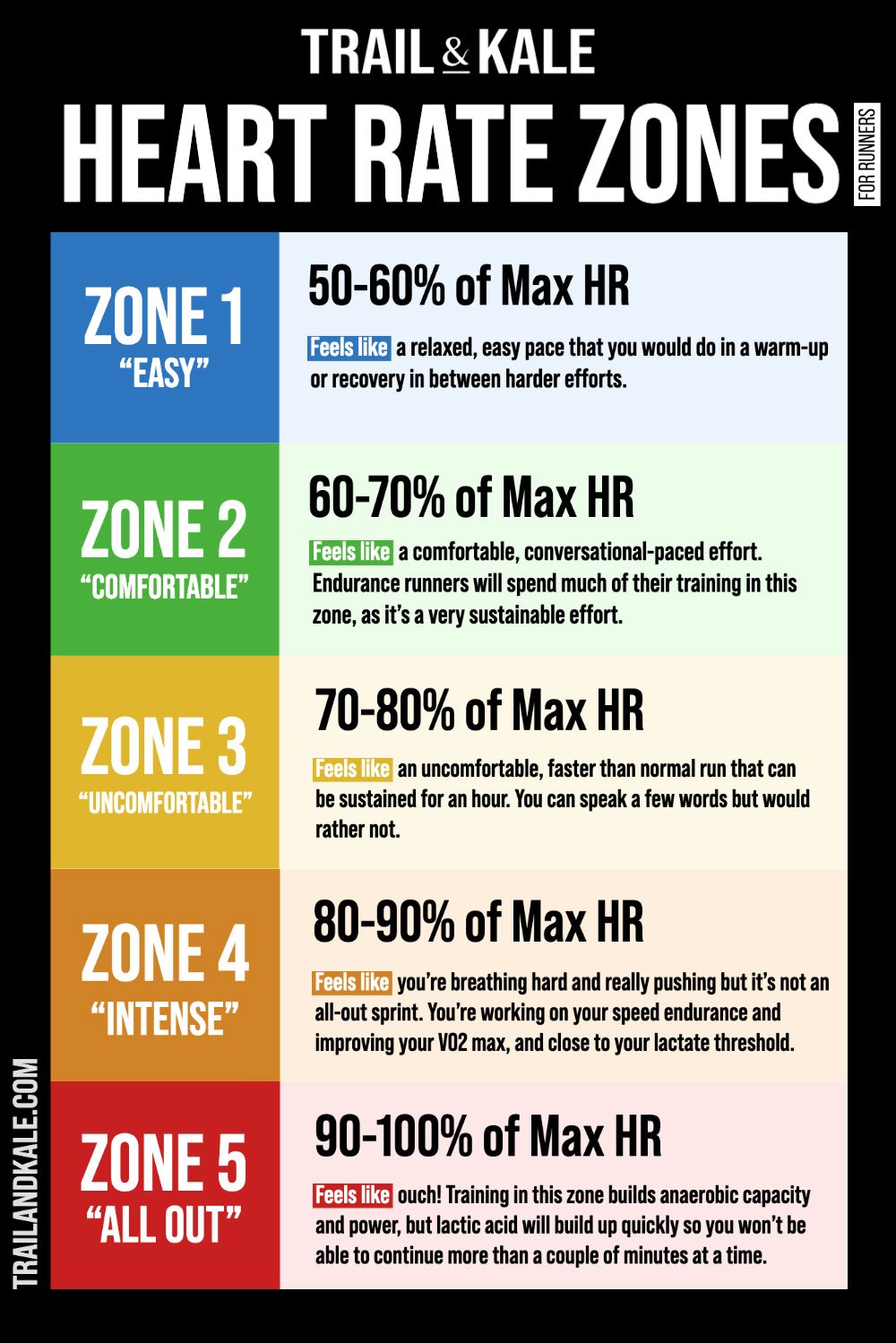
Each of these are referenced in the plans themselves using heart rate zones for guidance around what level of intensity you should be working at.
Easy run
Easy runs are low-intensity, comfortable-pace runs that promote recovery, improve endurance, and build an aerobic base, while you cover some easy miles. When done a day or two after an intense workout, these are also referred to as recovery runs.
Tempo run
A tempo run is a sustained effort at a comfortably hard pace that improves lactate threshold, increases speed, and builds mental toughness. Learn more about tempo runs.
Long run
A long run is a slow, steady-paced run that builds endurance, strengthens muscles, and prepares the body for the marathon distance.
The length of long runs increases over the weeks, helping to gradually increase your weekly base mileage.
Interval run
An interval run involves alternating periods of high-intensity running with periods of recovery, improving your anaerobic threshold, ability to run faster, and overall fitness. Learn more about the different types of interval training you can do as well as the benefits of uphill running and hill repeat intervals.
In addition to running, the following activities are also on each training plan and are important in helping to prepare your body and mind to run your marathon.
Core strength training
Strength training, could technically be deemed cross training, improves muscular endurance, and enhances running economy by developing strong, balanced muscles throughout the body, which helps improve running form and posture, better-enabling you to run faster.
- Squats and lunges with weights
- Deadlifts
- Push-ups to strengthen upper body muscles.
- Planks and side planks to improve core strength and stability.
- Russian twists and leg lifts to develop abs and obliques.
- Glute bridges and hip thrusts to strengthen the hips and lower back muscles, improving running form and reducing the risk of injury.
This runner’s fitness routine that I put together for our YouTube channel is a beast of a strength training session using just your bodyweight (no gym equipment is neccessary), if you’d like one to follow:
Cross training
Cross training allows for a low-impact workout that promotes recovery, improves cardiovascular fitness, and strengthens muscles that are underutilized in running.
- Cycling or swimming are great methods of cross training to maintain cardiovascular fitness without the impact of running.
- Yoga or Pilates to improve flexibility, balance, and strength.
- Rowing or elliptical training to build endurance and improve overall fitness.
Rest day
Rest days allow for recovery and repair of muscles, reducing the risk of injury and overtraining. They are crucial for allowing the body to adapt to the demands of marathon training and to maintain overall health and well-being.
On your rest day, it can help to do some gentle stretching to help alleviate any muscle tightness and maintain flexibility.
What to do if you miss a few weeks of training
If you miss more than two or three weeks of training in the weeks leading up to race day, it is important not to panic or try to make up for lost time too quickly.
Trying to cram in too much training can lead to injury and fatigue, and may even harm performance on race day.
Instead, adjust the training plan by reducing the mileage and intensity of runs in the weeks leading up to the race, and focus on maintaining a consistent running routine and cross-training to maintain fitness and prevent further injury.
It is also important to listen to your body and be honest about your fitness level on race day. It may be necessary to adjust pace or expectations for the race based on the missed training, and to focus on completing the race rather than setting a personal best time.
Overall, the key is to be flexible, patient, and to prioritize injury prevention and overall well-being in the lead-up to race day so that you can make it to the start line injury-free and ready to go.
Other FAQs about running a marathon
What to wear when running a marathon
When it comes to what to wear for race day, the most important thing is to choose comfortable, breathable clothing that is appropriate for the weather conditions on race day.
Generally, you should aim to wear lightweight, moisture-wicking fabrics that will help keep you cool and dry during the race.
For warm weather races, shorts and a moisture-wicking shirt are typically sufficient, but I would highly recommend you wear a running hat, cap or visor to keep the sun off your face, and take a pair of running-appropriate sunglasses to keep sun, debris, wind and glare away from your eyes.
For cooler weather races, you may want to wear long sleeves or a lightweight jacket (possibly a waterproof jacket if it’s forecast to rain), and may consider running gloves and a winter running hat or headband to keep your hands and head warm.
What running shoes should I wear for marathon training and race day?
It’s important to choose footwear that is appropriate for you, that provides adequate support and cushioning for the length of the race.
This should be the same pair of running shoes you’ve been training in, so you can be confident they are sufficiently supportive and comfortable and won’t rub or cause blisters over the hours you’ll be running your race.
If you’re looking for a supportive running shoe with enough cushioning and response to help you complete your half or full marathon training; the Nike InfinityRN 4 could be the perfect choice for you!
Read my in-depth Nike InfinityRN 4 review to learn more.
To learn about all the other great running shoe brands out there, head over to our road running shoes buyer’s guide for our top recommendations that will have you matched up with the best running shoe brand for you.
What to eat before, during and after a marathon
Before the race, it’s important to eat a meal that is high in carbohydrates and easy to digest. This will provide the necessary energy for the race without weighing you down.
A good pre-race meal could include oatmeal with banana and honey, toast with peanut butter and jelly, or a bagel with cream cheese and fruit.
During the race, stay hydrated with water and fueled with easily digestible carbohydrates, such as energy gels or chews.
Experiment with different fueling strategies during training runs to find what works best for your body.
Some runners prefer to eat solid foods, such as bananas or energy bars, while others find that gel-based nutrition works best.
After the race, replenish lost fluids and nutrients as soon as possible to aid in recovery.
Within 30 minutes of finishing the race, try to eat a snack or meal that is high in carbohydrates and includes some protein, such as a smoothie with fruit and Greek yogurt or a sandwich with turkey and avocado, or a simple plant-based protein shake.
How to recover after a marathon
In the hours and days following the race, it’s important to continue to eat a balanced diet that includes plenty of whole grains, lean proteins, fruits, and vegetables. This will help your body recover and rebuild after the physical stress of the race.
Here are some other things you can do to aid in your recovery after running a marathon:
- Do these post-run static stretches
- Drink a protein shake
- Take an ice bath
- Get plenty of sleep
- Wear compression tights
- Get a massage (or at least get a percussion massage gun for a DIY option!).
Running a trail marathon
If you like the sound of running a marathon and are less concerned about running the distance in a certain time, and more interested in running 26-ish miles around somewhere scenic, then a trail marathon may be more your thing!
At Trail & Kale we’re trail running experts, so if this sounds appealing, head over to Alastair’s extremely popular trail marathon and 50k training plan to learn more, or check out our other trail running-specific content, including our beginners guide to trail running if off-road running is completely new to you.
Pin this post!
